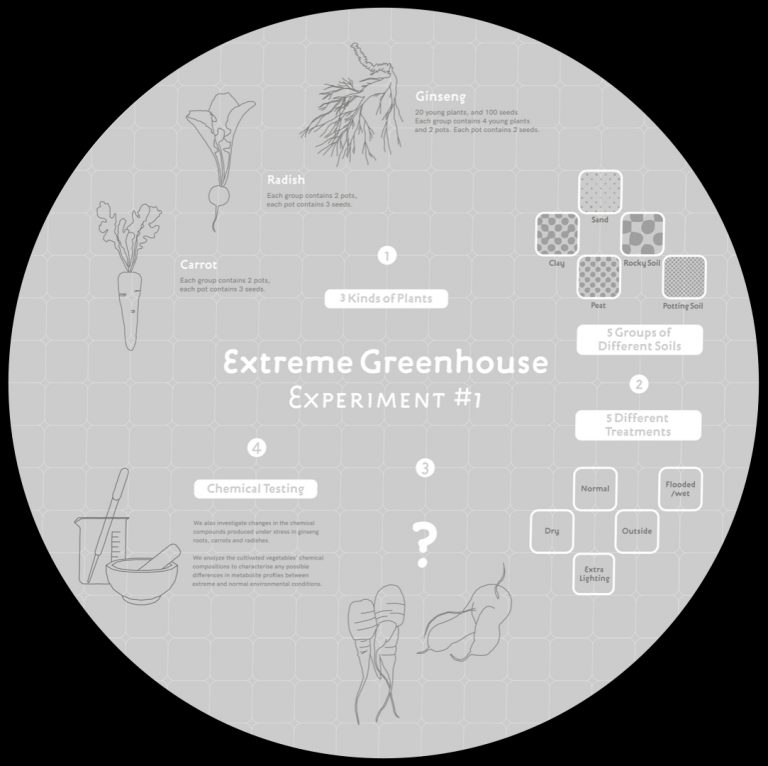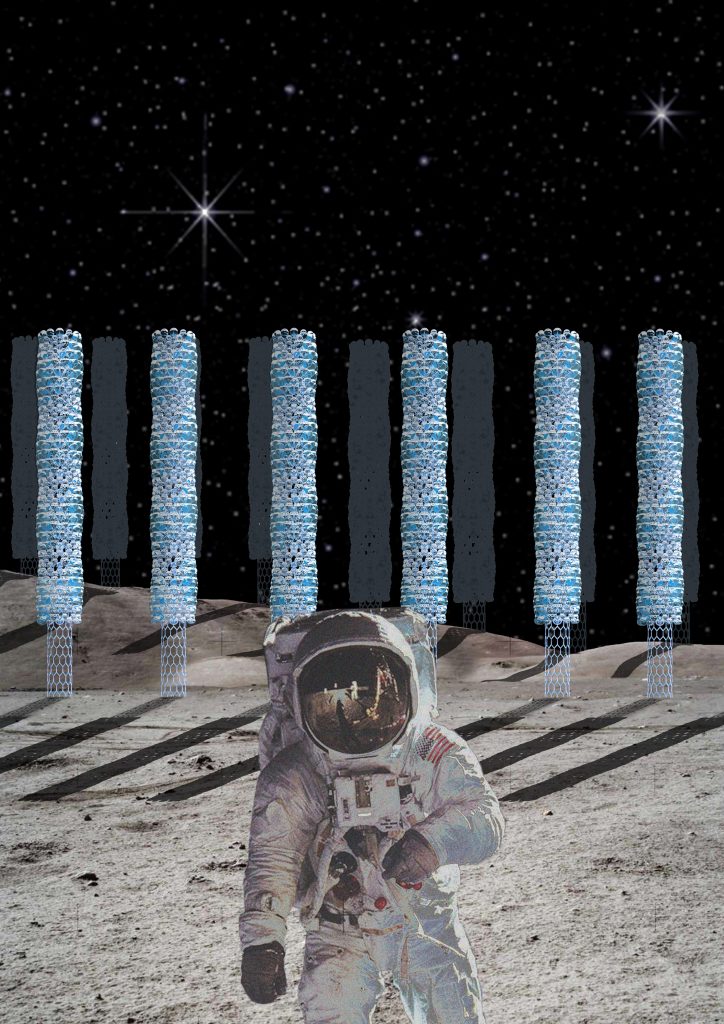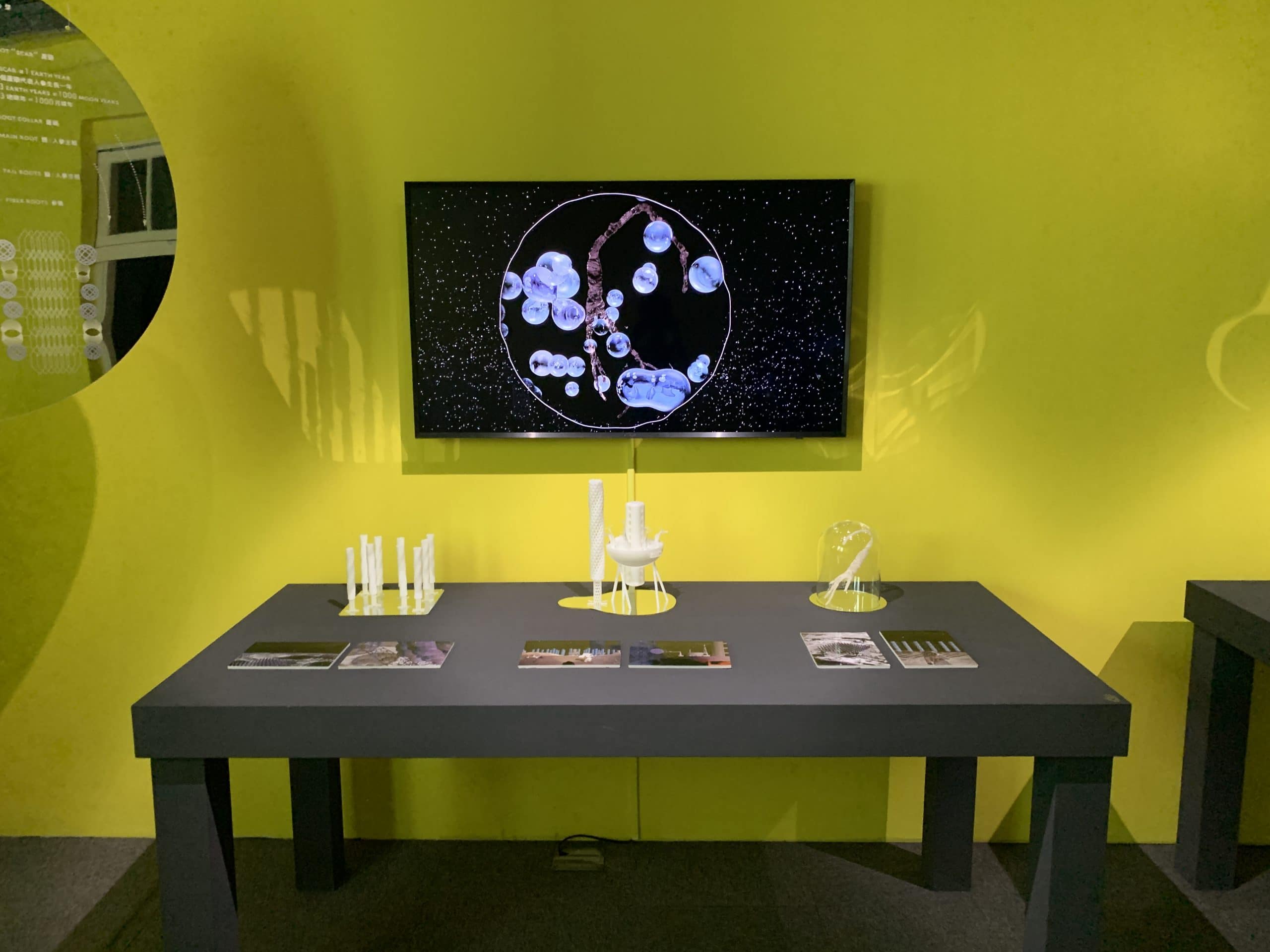Bio artist Kuang-Yi Ku collaborated with scientists to design a series of new cultivated ginsengs which are conceptually and culturally much stronger than the wild version. This new ginseng will become a “hybrid-medicine” combining western science and Traditional Chinese Medicine (TCM). Based on the various applications of science and technology, this project has three parts: Extreme Greenhouse, Moon Ginseng, and Time Machine Farm.
The consumption of ginseng is believed to connote the supplement Jing Qi 精氣, as ginseng grows in a harsh, natural environment and takes the shape of a man’s body. The conceptualization of “Qi” is considered to be consumed more than the consumption of the material itself. Long-lived wild ginseng, in particular, is deemed as anti-aging. Due to the belief system of TCM, people think that wild ginseng is more potent than its cultivated counterpart. This has caused illegal harvesting and led to wild ginseng becoming endangered in North America and East Asia. A serious conflict between ecological conservation and the cultural value of traditional Asian medicine arises. The “Millennium Ginseng Project” aims to find ways to resolve this complicated situation between global modernity and Asian tradition.
Artist Kuang-Yi Ku collaborated with plant scientist Rashmi Sasidharan and Gerard van Buiten, Utrecht University’s botanical garden manager. Together they attempt to design an “Extreme Greenhouse,” providing an artificially created stressful environment to mimic the native wild habitat of ginseng. In the “Extreme Greenhouse,” ginseng will be tortured by different extreme environments as it might occur in its natural environments. The strongest ginsengs will be selected as the finalists.
In the first experiment of this part, there are a series of treatments for ginseng as well as carrot and radish. These three plants are cultivated with 5 different soils and 5 different treatments. Being a work-in-progress, the artist and scientists continue working on developing other experiments in order to construct the final ‘Extreme Greenhouse’.

“Moon Ginseng” proposes a speculative agricultural system where ginseng is grown on the moon. This part was inspired by the traditional Chinese culture and emerging technologies. First of all, one moon year could be defined as one earth month, so the lunar “millennium ginseng” can be cultivated in only 83 earth years. Secondly, in a Chinese myth, “Chang’E Flying to the Moon” (嫦娥奔月), a woman who took elixir of life became immortal and lived on the moon forever. This legend shows the moon represents immortality in ancient Chinese traditions. At last, some scientific researches indicate extreme environment could stimulate ginseng producing better therapeutic properties. The moon’s harsh environment can create artificial wild ginseng stronger than regular wild ones on earth.


The artist builds up a science fiction narrative going far beyond the moon ginseng story in the third part. Based on Einstein’s theory of general relativity, time travel is theoretically possible, as is depicted in many sci-fi stories. In this part, the artist imagines cultivating ginseng in a time machine in the far future. “Time” will be conceptually compressed into ginseng. The resulting ginseng could present the new meaning of time and abstractly contains many millennia.
“Millennium Ginseng Project” has been exhibited internationally such as National Taiwan Museum of Fine Arts in Taichung in 2020, “CHRONIQUES – Biennale of Digital Imagination” in France in 2020, “Dutch Design Week” 2019, “14th Digital Art Festival Taipei” at Museum of Contemporary Art Taipei in 2019, “ReShape – Mutating Systems, Bodies and Perspectives” at MU Hybrid Art House in Eindhoven, the Netherlands in 2018.

Consultancy of plant ecophysiology: Rashmi Sasidharan, Associate Professor, Plant Ecophysiology, Utrecht University, The Netherlands
Consultancy of greenhouse developing: Gerard van Buiten, manager of botanical garden in Utrecht University
Consultancy of Traditional Chinese Medicine: Po-Hsun Chen, Physician, Chinese Medicine Department, Tainan Hospital, Ministry of Health and Welfare, Taiwan
Architecture design, 3D modeling and 3D printing: Po-Yun Chang, Zhao-Wei Liu, Yi-Ting Chiang
Graphic design and print fabrication: Phoenix Yu Tzu Huang, Ishtar Hsu
Animation and video making of “Moon Ginseng” and “Time Machine Farm”: Jian Da Huang
Documentary video making of “Extreme Greenhouse”: Yen-An Chen
Stimuleringsfonds, Netherlands
National Culture and Arts Foundation, Taiwan,
Department of Cultural Affairs, Taipei City Government, Taiwan
MU, Eindhoven, Netherlands
AirWG, Amsterdam, Netherlands